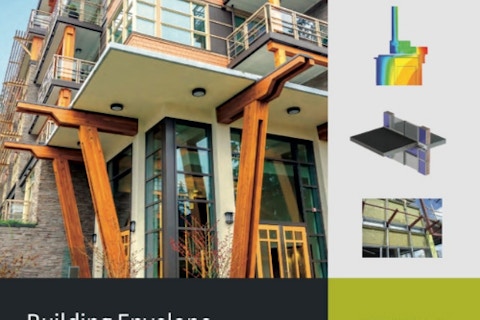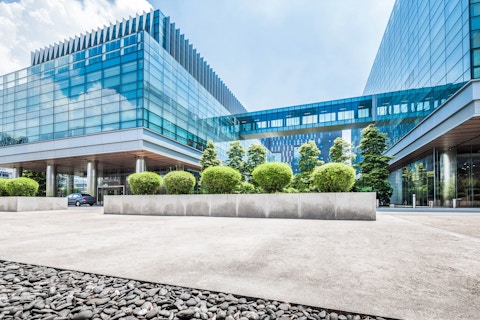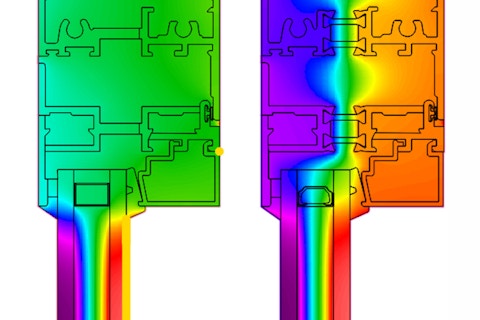Visit Facadetectonics.org where members share a common message. A properly designed facade system is essential to creating highly efficient, comfortable, resilient and sustainable buildings.
FTI DIALOGUES: Collaborative Project Delivery Reloaded
The Facade Tectonics Institute kicked off their first installment of FTI Dialogues: Suppliers & Contractors Series virtually on Friday, March 19th.
High-performance facade systems are recognized as a key element in achieving sustainable building performance while also being tasked with providing occupant comfort and conveying appealing aesthetics.
Project delivery strategies are challenged to meet strict deadlines while staying at the forefront of increasingly complex and evolving technology all while keeping within a tight budget. These, oftentimes competing, constraints create challenging conditions for even the most astute in the design-build process.
In this session, four construction industry subject matter experts shared case studies and discussed strategies they use to navigate project requirements, mitigate risk, accelerate schedules and reduce cost.
Dirk Schulte, Pre-Construction Executive at Roschmann Steel & Glass Constructions, kicked off the presentations by providing a specialized facade subcontractor’s perspective. He reviewed a planning tool known as a design assist model whereby the architect, engineer, builder and enclosure contractor are mutually developing the enclosure system.
The design assist approach works well when a project requires early engagement of the construction team in cases with complicated architecture, new technologies, aggressive budgets or other significant constraints. This helps the team gain buy-in and refine project delivery.
All projects contain cost, time and quality constraints. Design assist helps bring project design into a sweet spot where they can reduce cost, work within realistic timeframes and not compromise quality.
Dirk pointed out that value engineering does not always mean cutting cost. It may mean bringing in better products which could increase cost in one area but prove beneficial in other areas. It is a balancing act.
Steve Abbring, Tendering Manager at Permasteelisa North America, showed the importance of balancing innovation, schedules and budgets while highlighting gaps in responsibilities and expectations for successful project delivery.
To deconstruct the innovation challenge, designs need to consider conceptual, technical and operational constraints. What is the intent of the design? Is it likely to fit within budget? Will it perform and meet quality expectations? Can it be done within allotted lead times while maintaining balance with stakeholder expectations and risk tolerance?
Up-front goal setting and documentation are keys for determining the results needed for a successful process. Record when and why decisions were made.
Each stakeholder has different goals. Roles and responsibilities can change within the project team from phase to phase. All throughout the process you need to ask if decisions meet the litmus test of the pre-defined goals. Be clear on terminology such as design-assist versus design-build and when construction will begin, or the project can morph into a build-design.
It is important to know when to quit something or shift gears. Don’t be afraid to know when to chalk one up to the loss column and move on.
Donald R. Williams, AIA, LEED AP, Senior Project Manager at Zubatkin Owner Representation, provided a project owner’s perspective of project delivery.
An owner’s definition of a successful project is one delivered on time, on budget and the performance meets all regulations. Owners want to be informed, engaged and heard. They want to understand their options and do not want to be surprised.
The role of an owner’s representative is to act as an advisor for the owner. They keep owners and their teams informed of schedules, scope and budgets. They keep the big picture forefront from pre-concept through close-out, facilitate resolution of issues, maintain team alignment and progress.
Collaborative delivery entails constant communication with defined roles, responsibilities, transparency, documentation, tracking and clearly established project goals. Clarify deliverables, identify and address gaps. Don’t make commitment decisions for others. Let them have buy-in.
The architect is a key lynchpin. Early involvement with design evolution and design assist helps to eliminate surprises.
Time spent developing relationships is important when you are responsible to multiple stakeholders.
Tailor information to your audience. Buildings are ultimately handmade objects.
Stephan Wurster, Architect and Business Development Manager, POHL highlighted work from some of their architectural accomplishments such as the Gherkin in London, the Transportation Hub in New York City and the Center in Hong Kong.
POHL also utilizes design assist to develop the best facade solution while keeping with their architectural vision as part of their 360-degree service along with value engineering an optimal solution to stay within budget.
POHL’s strict quality control procedures and Smart Factory system can process 3D models, digitize component information and enables tracking of products throughout the process from a cell phone app.
This real-time information allows for quick decision-making.
Communication with all parties involved remains key with all stages of development for a successful project. Tools can help streamline the process, but people make it happen. “A sense for design, craftsmanship and know-how are among our greatest strengths – machines are ultimately only a means to an end.” (Heinrich R. Pohl, Managing Partner)
Collaborative Planning = End-to-End Communication, Documentation and a Degree of Flexibility
Collaborative project delivery is the coordination and consideration of many variables such as, architectural designs (conceptual, preliminary and final), change orders, contractual requirements, timelines, budgets, codes, site selection, product procurement and supply chain management, logistics, skilled labor availability, fabrication, installation, environmental impacts and weather. This list is by no means exhaustive.
In short, communication and documentation along with maintaining a degree of flexibility in your planning are critical to satisfying the end-user needs of your stakeholders to successfully deliver projects within predefined contractual guidelines while mitigating unexpected challenges. Simple, right?

April Rawson
FTI Special Advisory Council
National Fenestration Rating Council
Looking for something specific?
Search our extensive library.
FTI’s SKINS email is the central source for the latest in building skin trends and research.
All emails include an unsubscribe link. You may opt out at any time. See our privacy policy.














